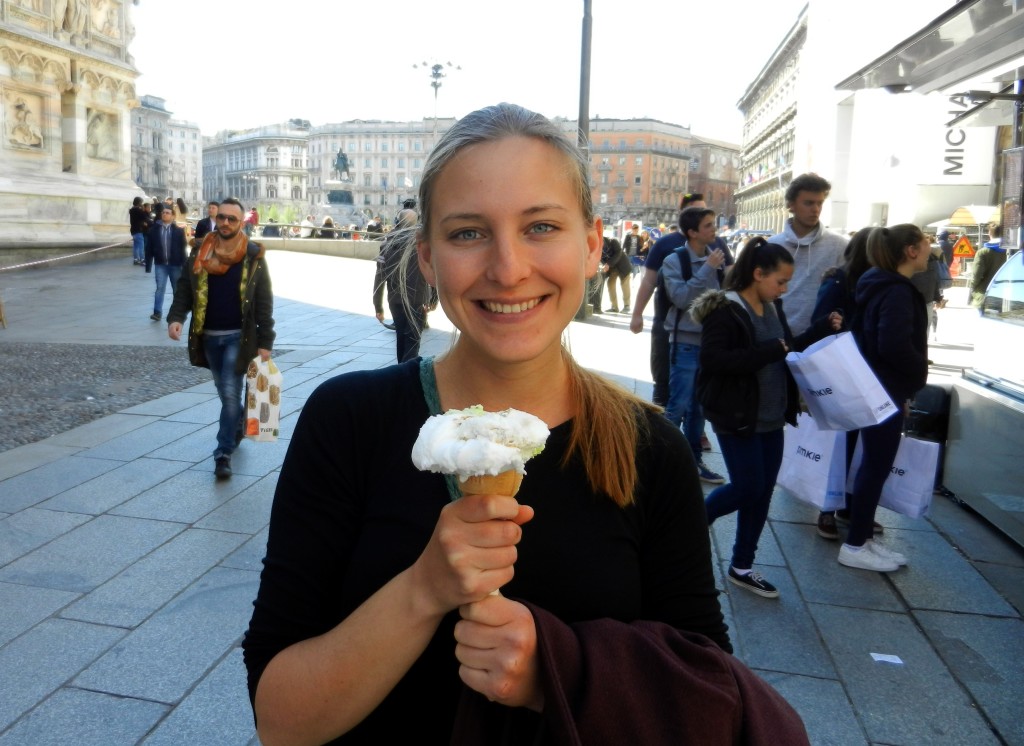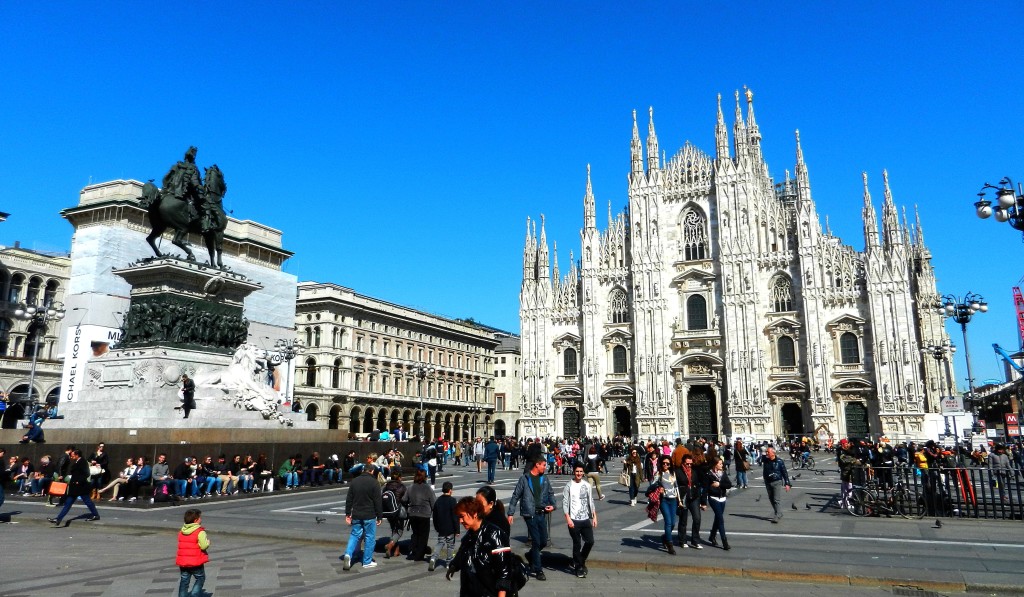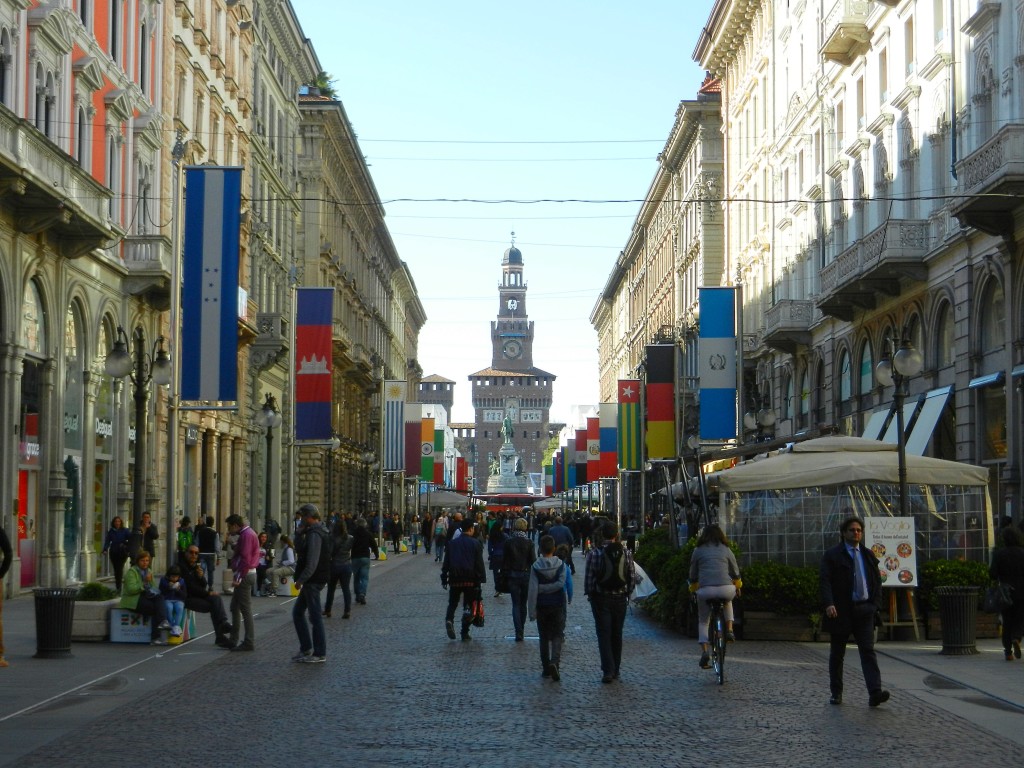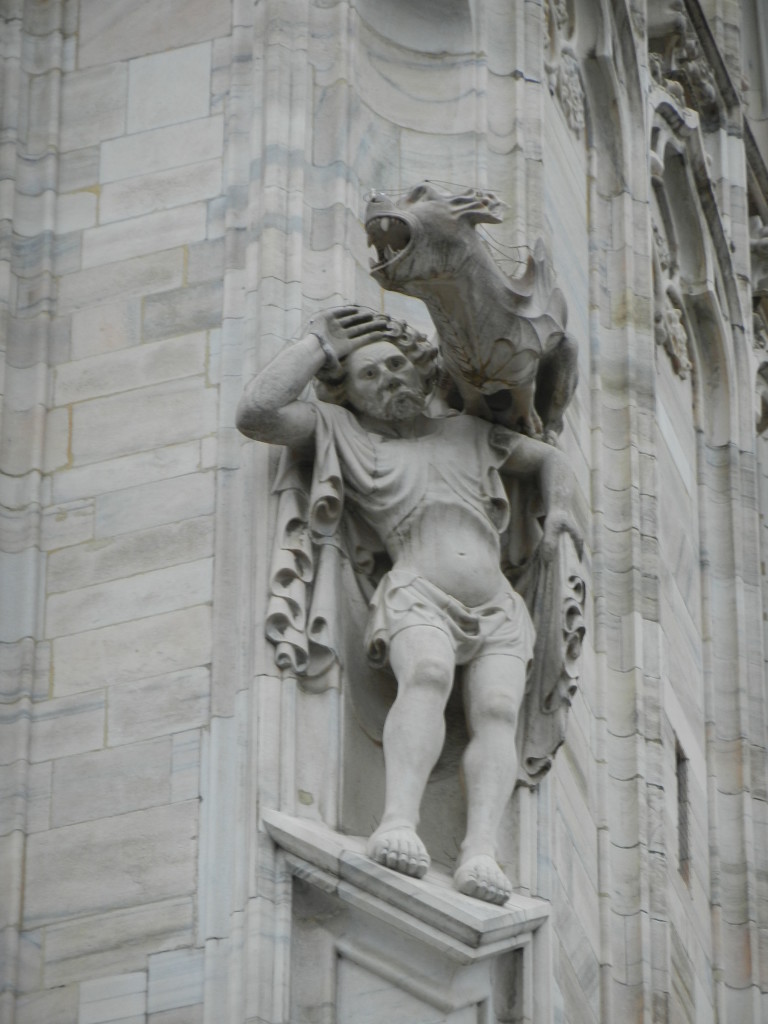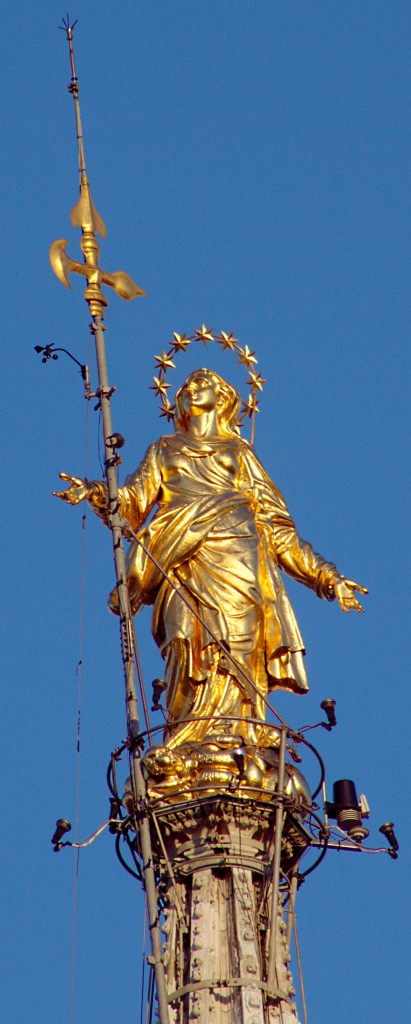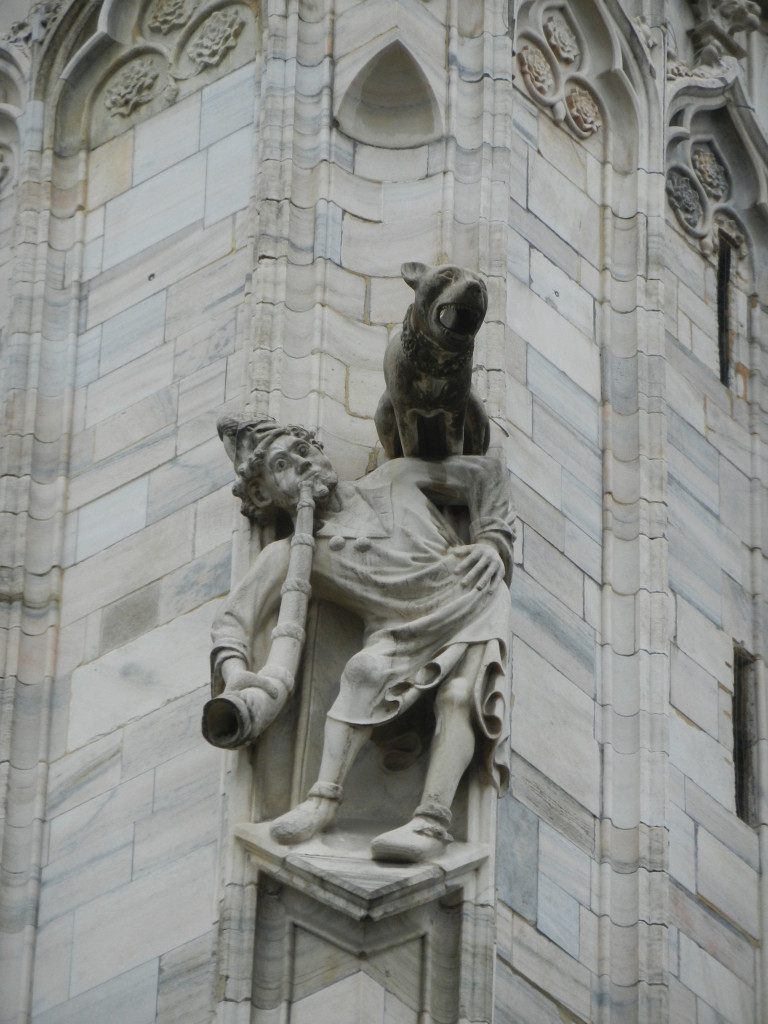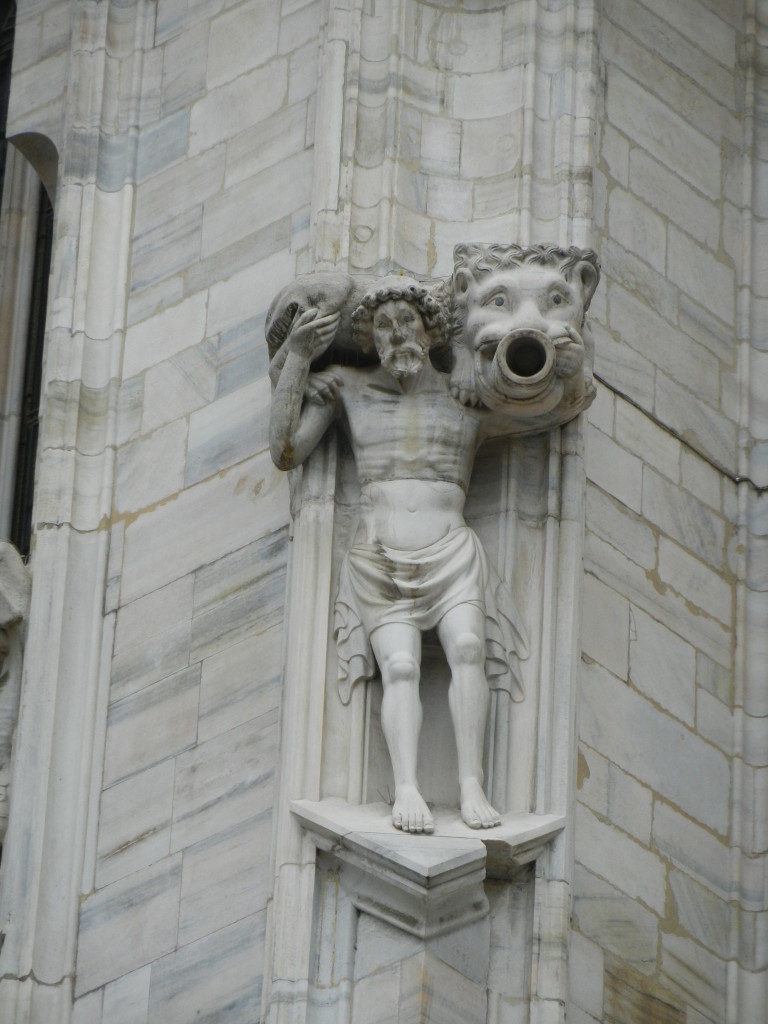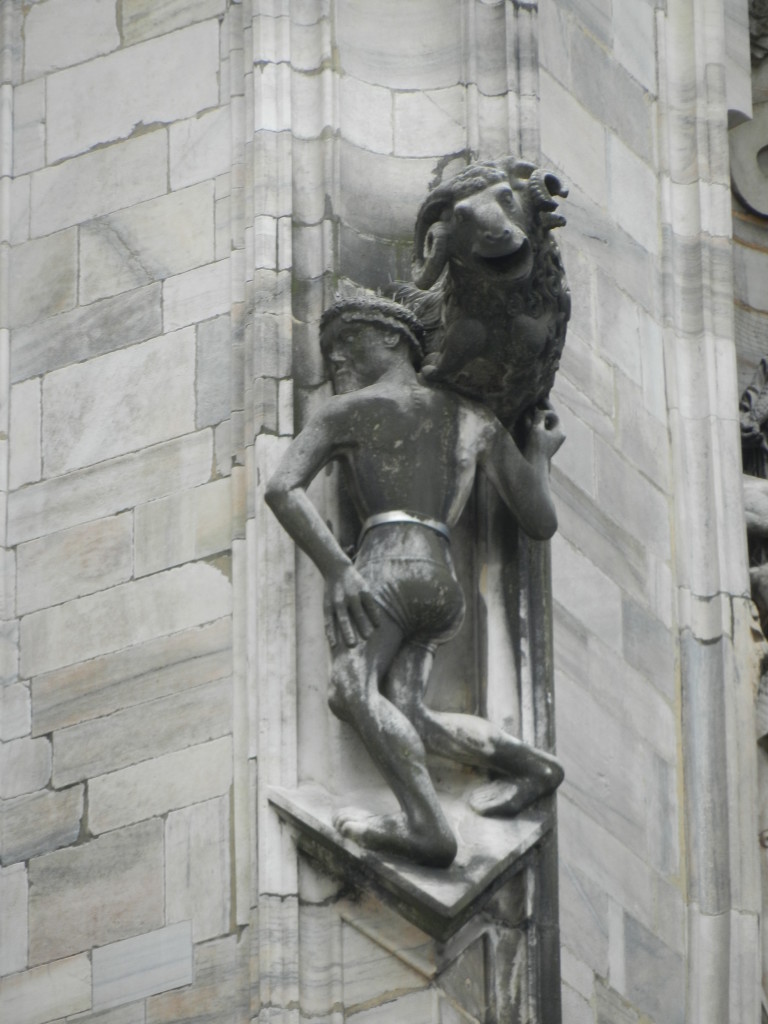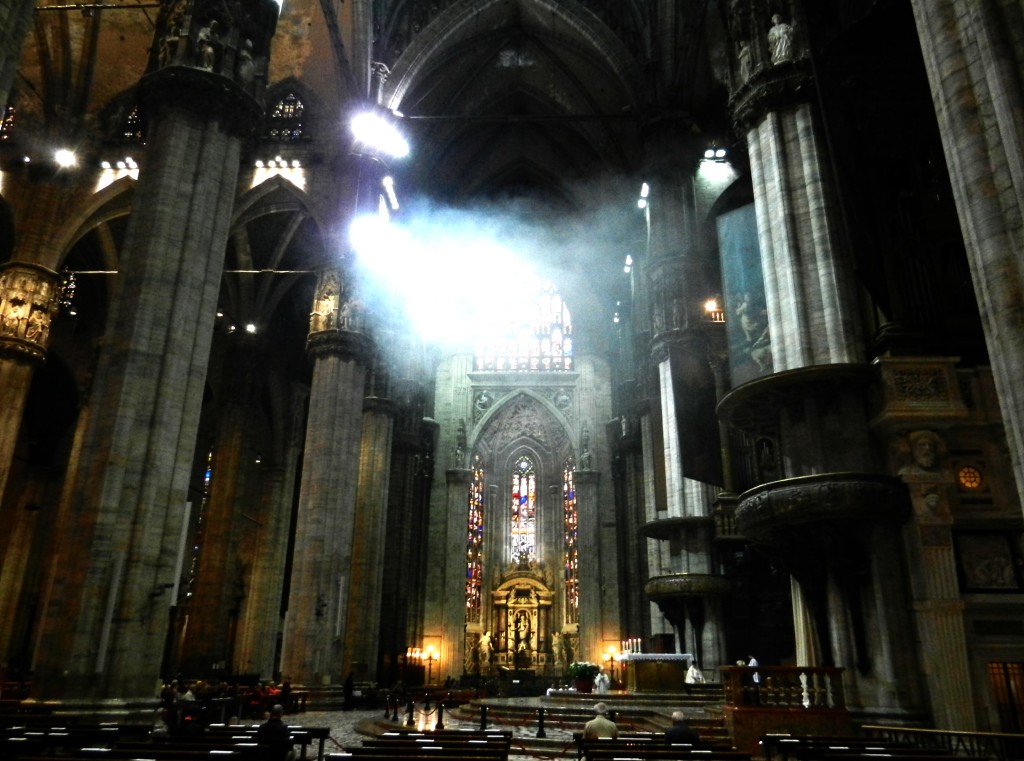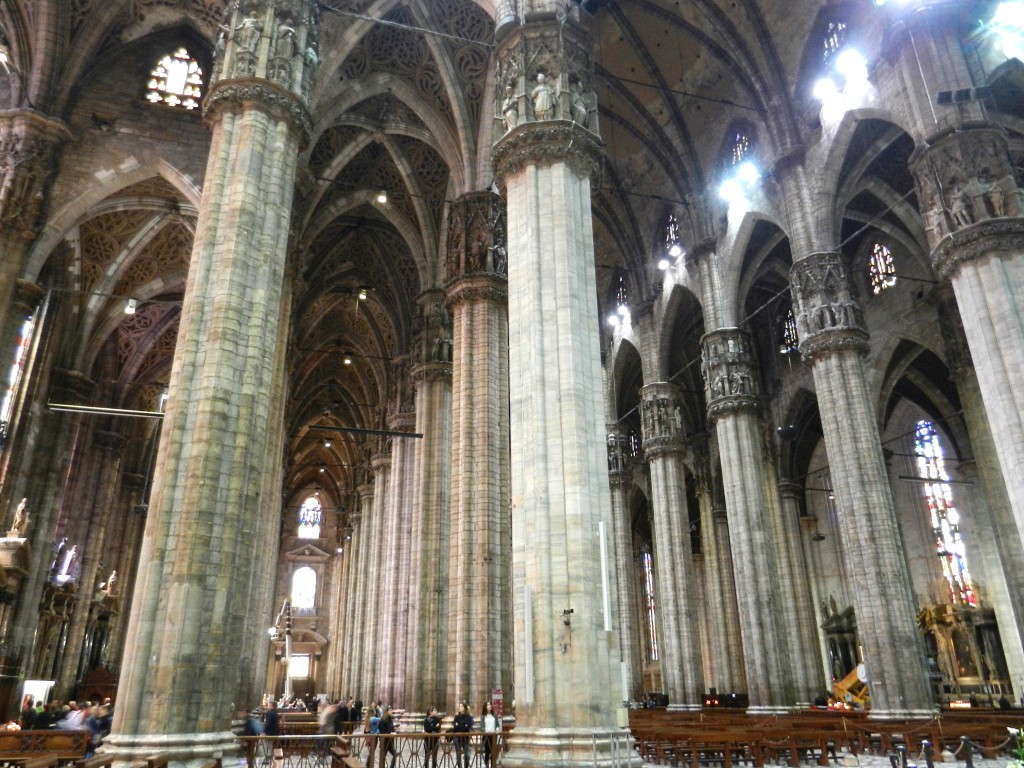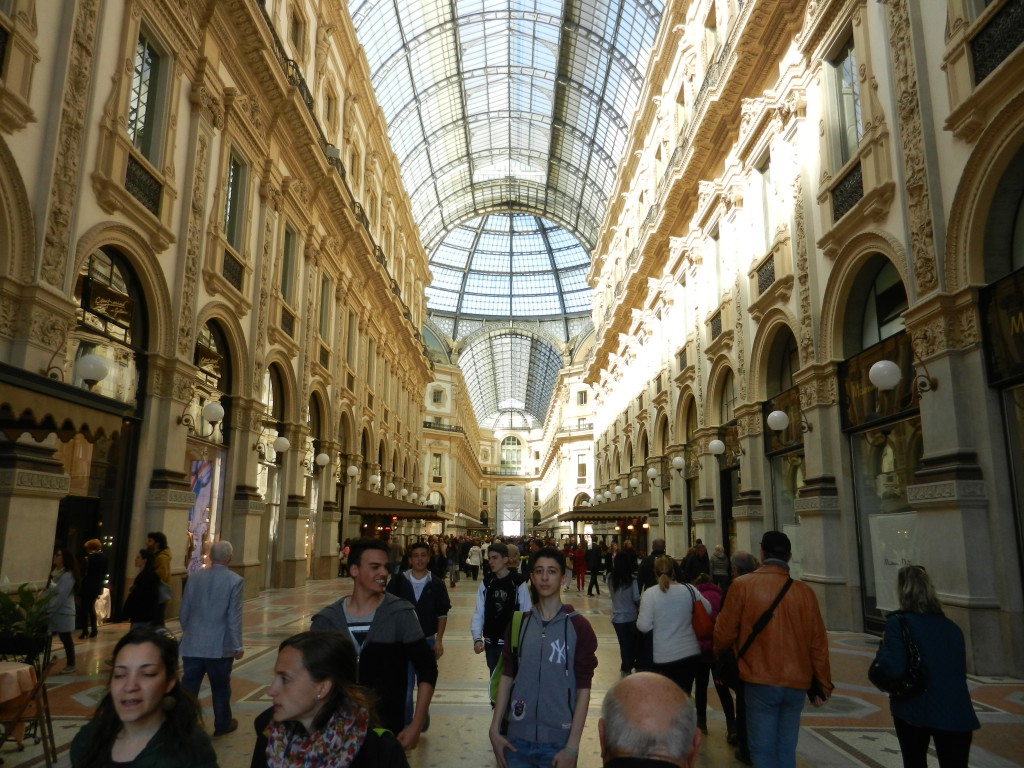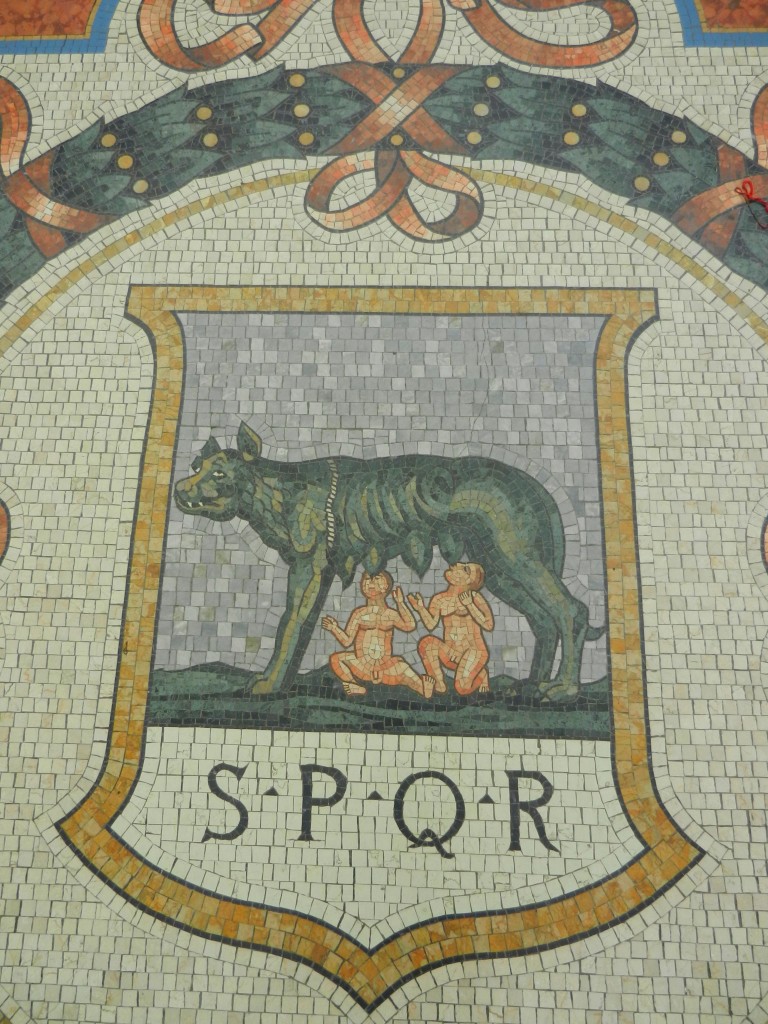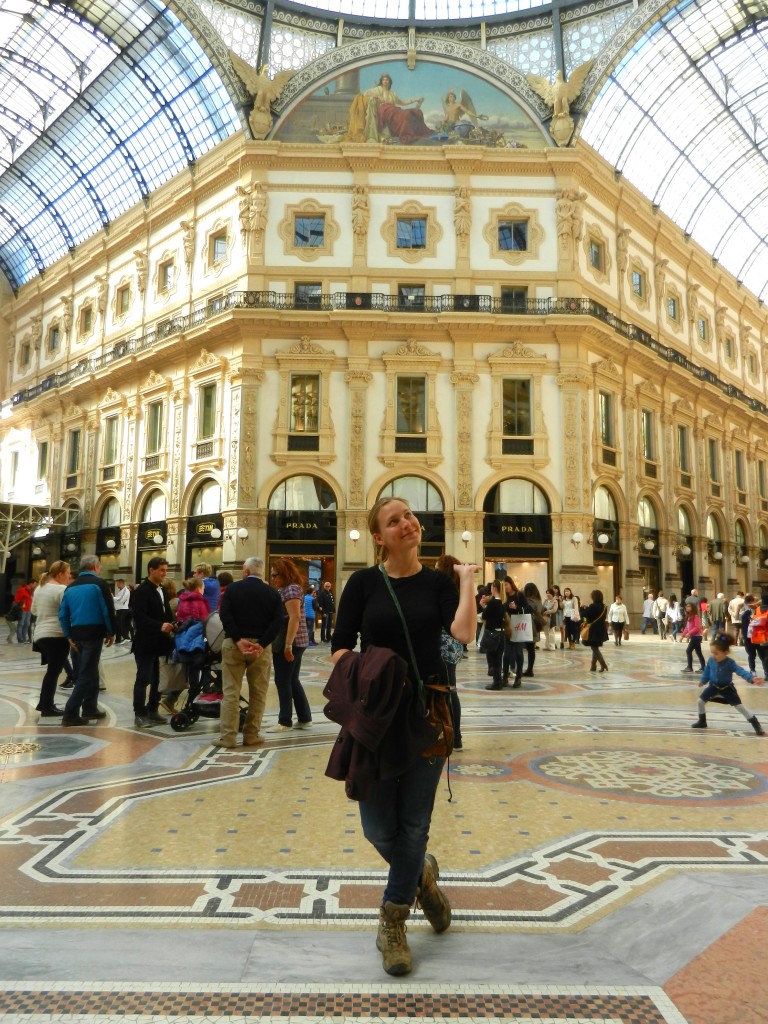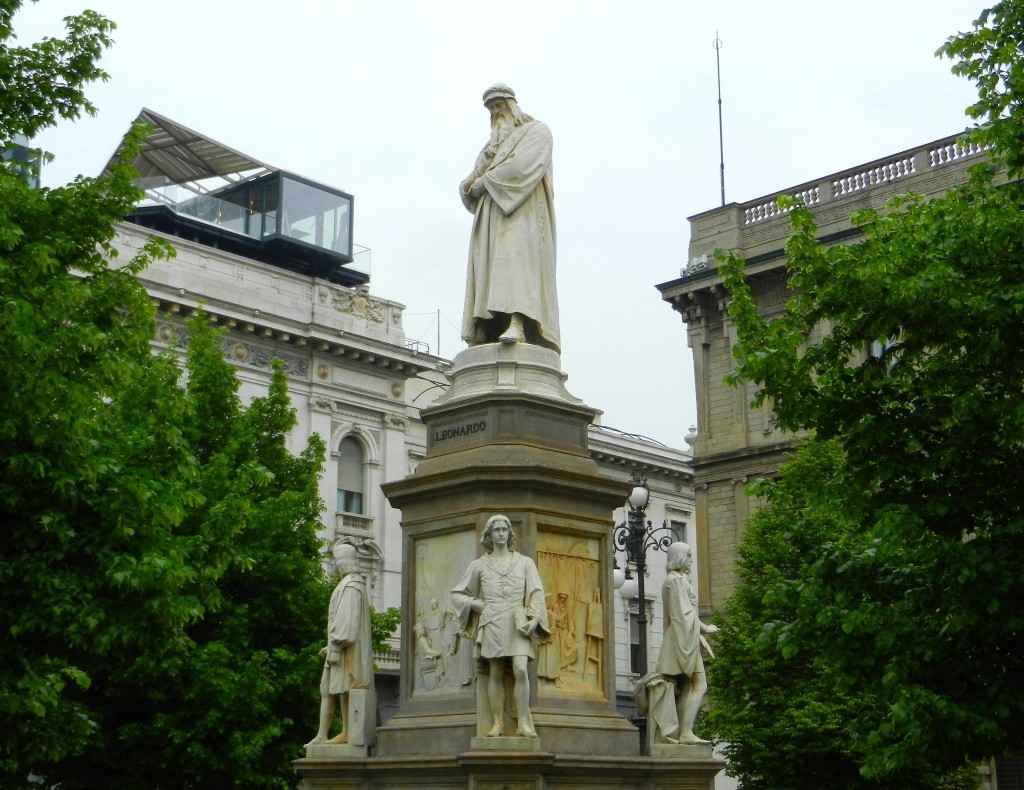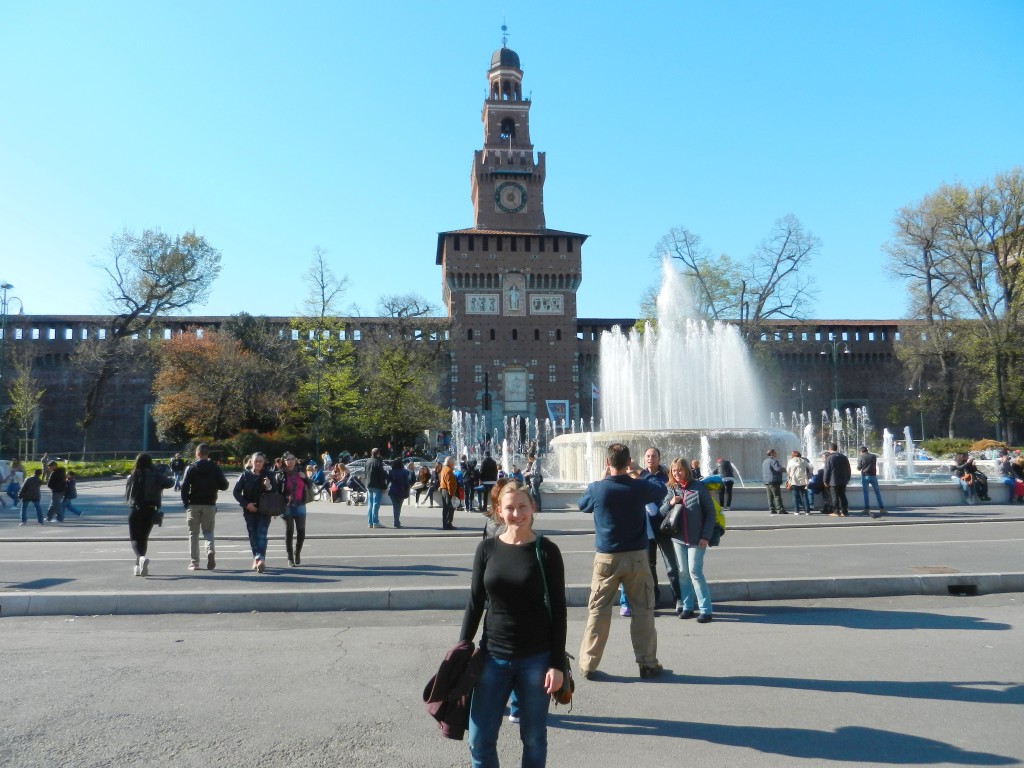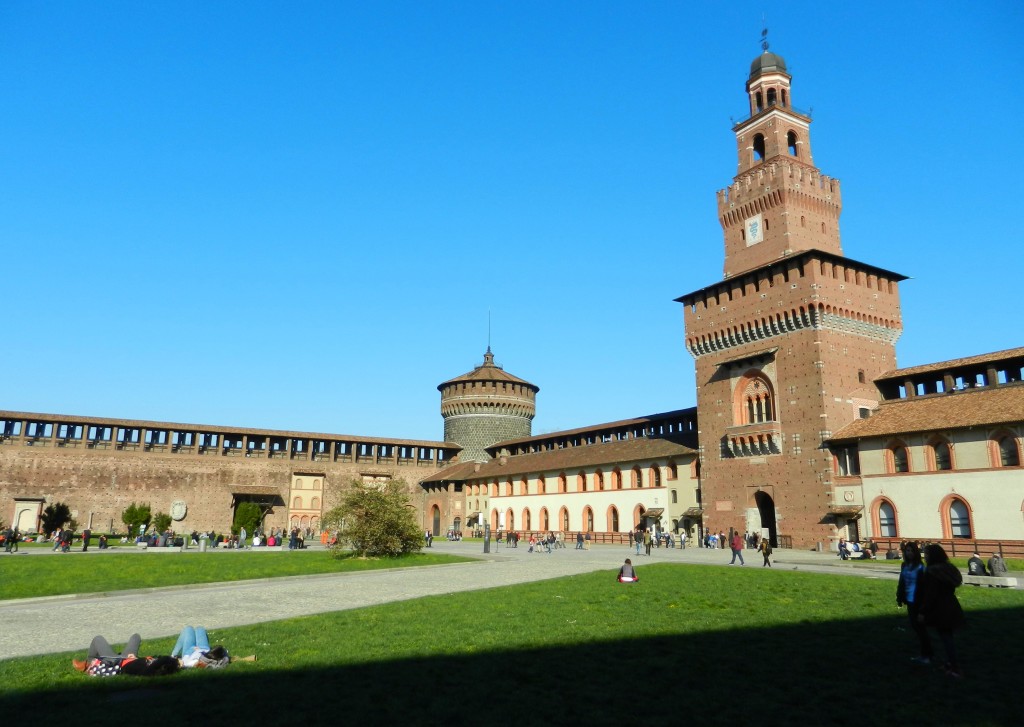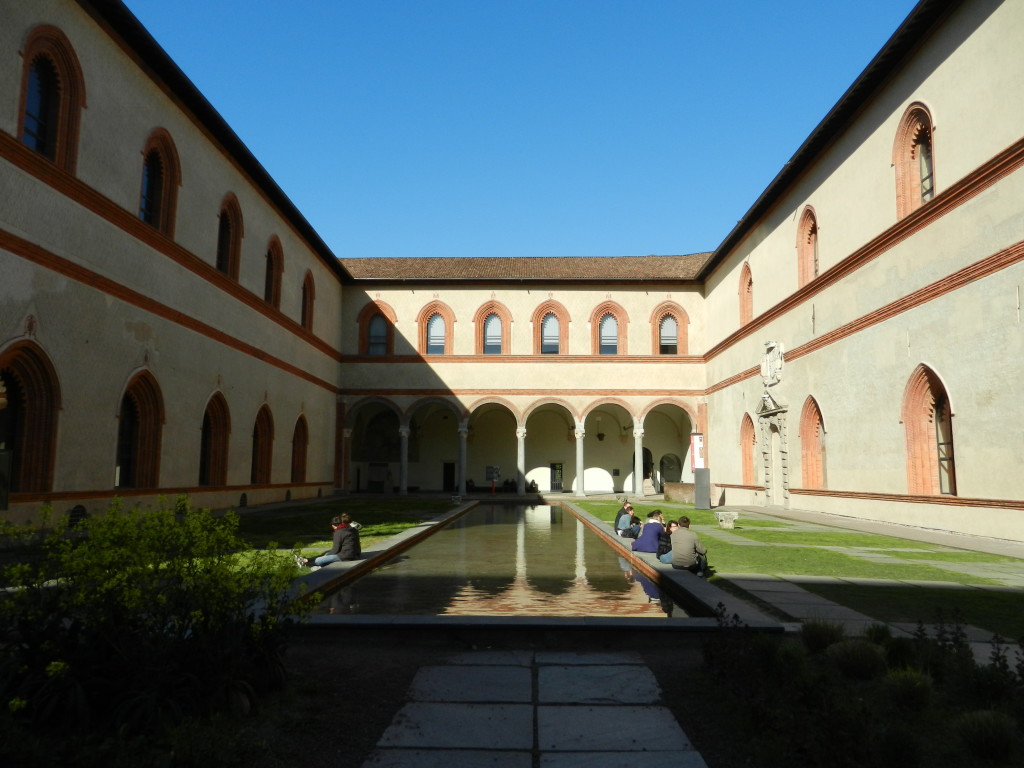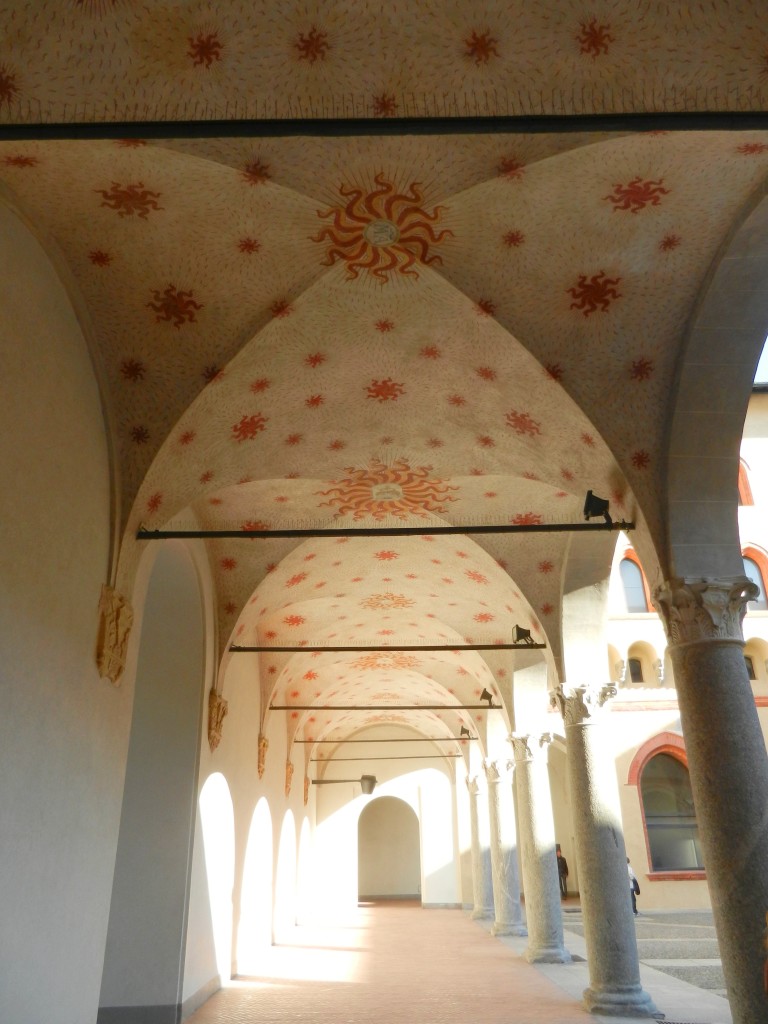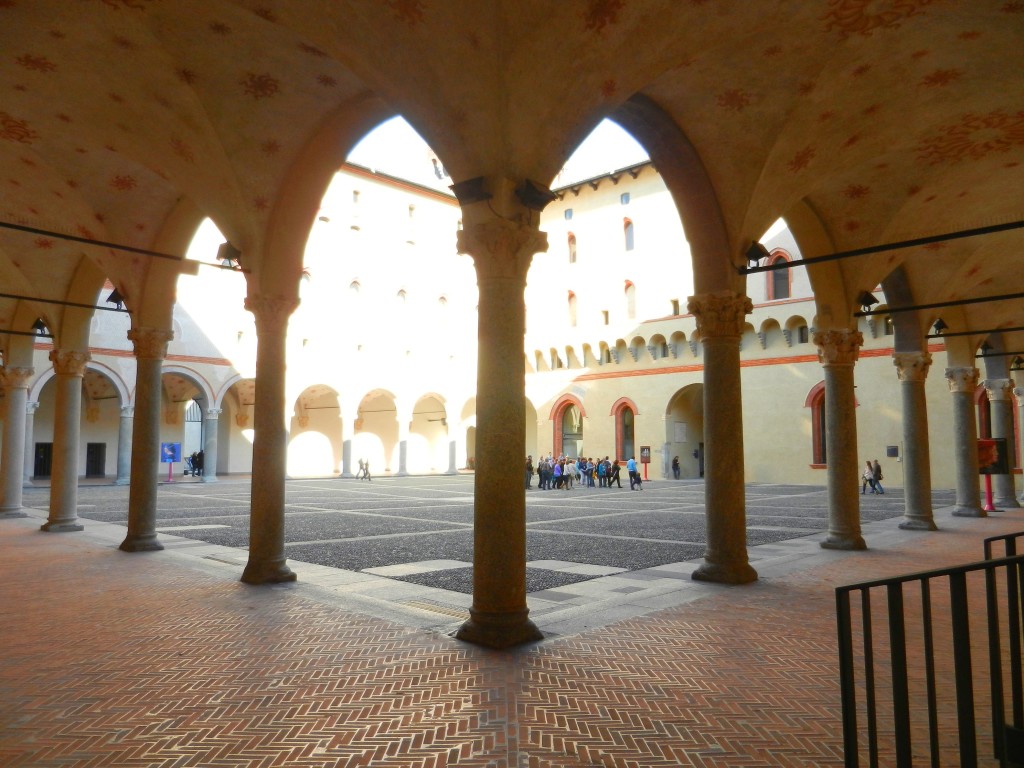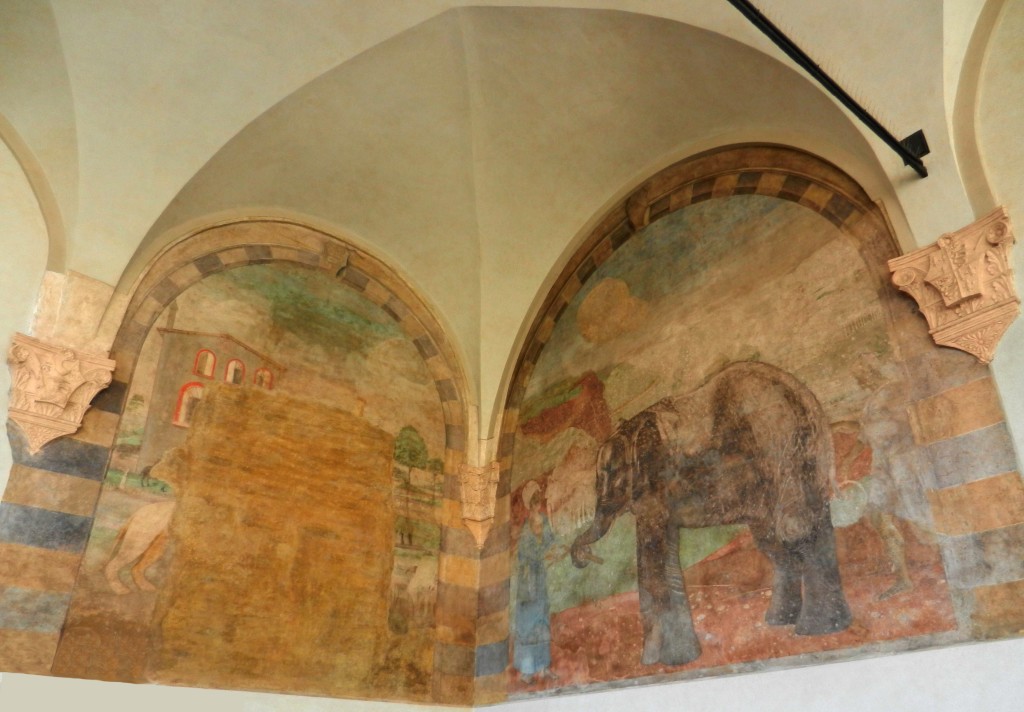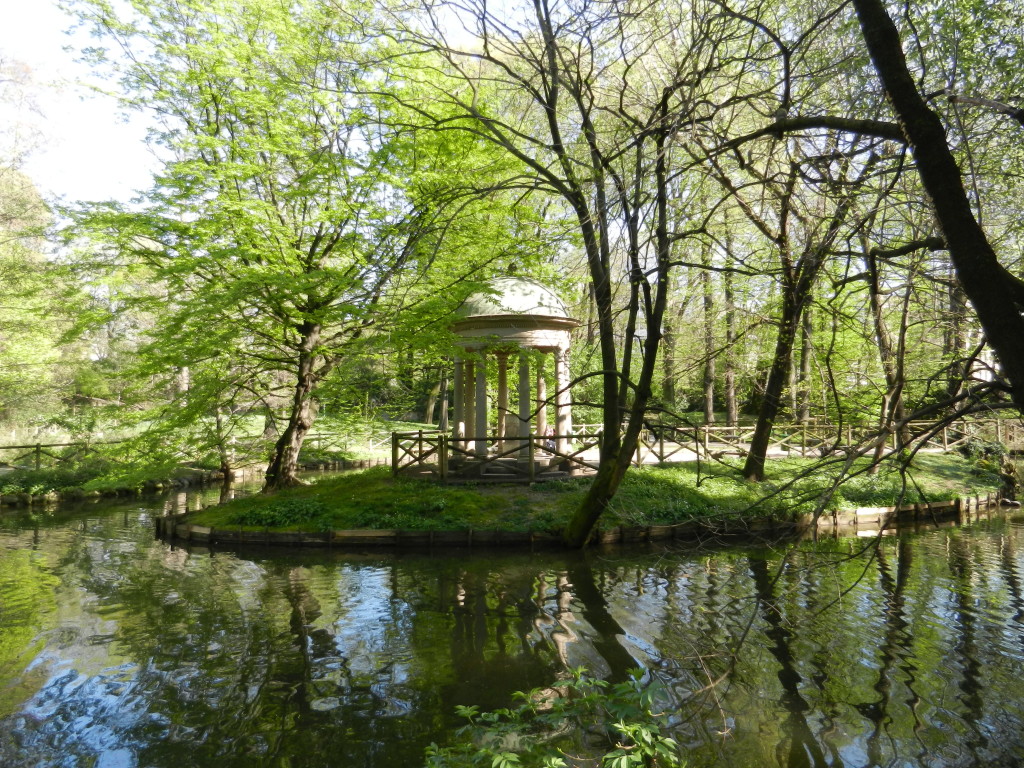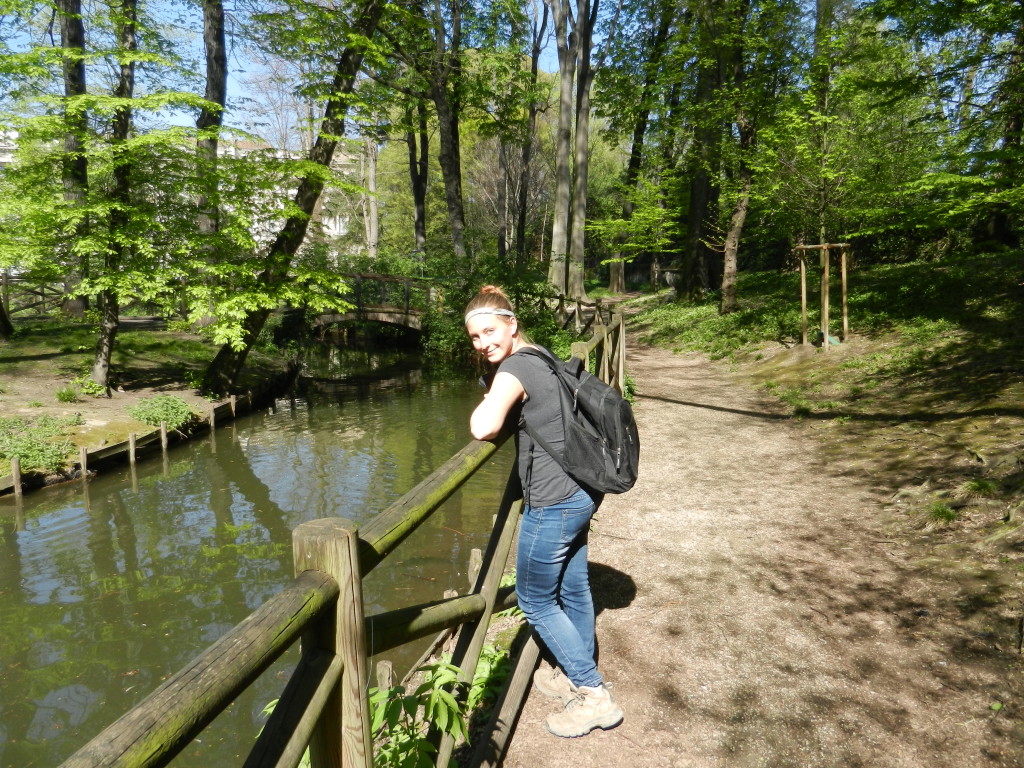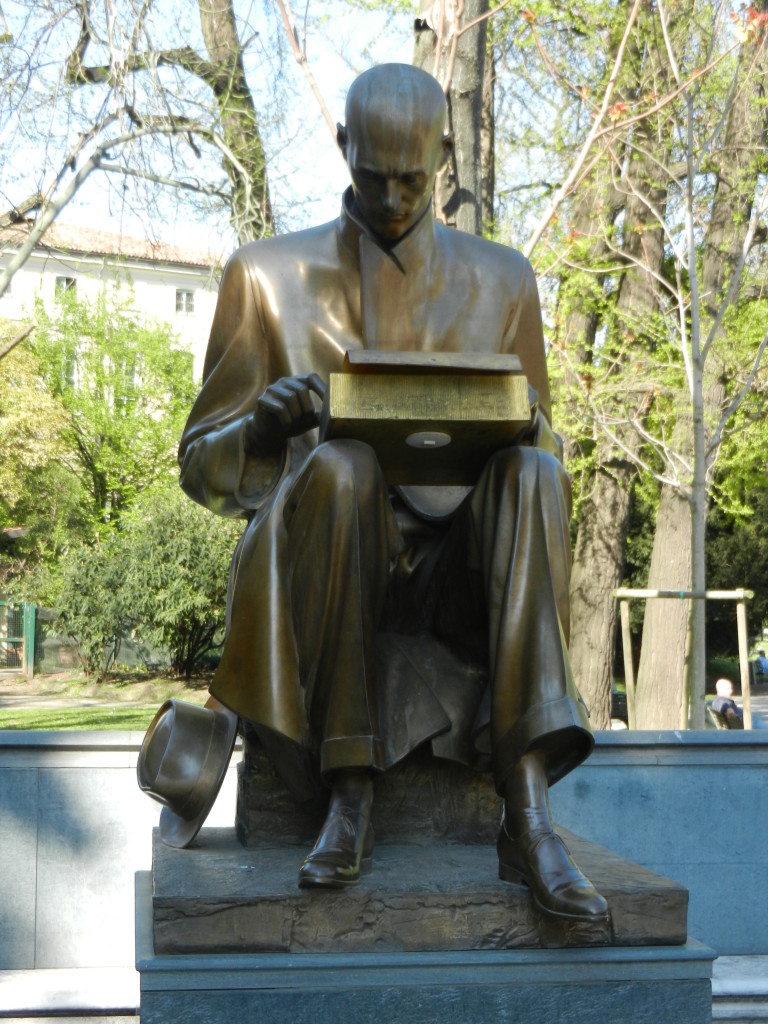Fixed like a giant spider-web on the map, Milan stands out as one of Italy’s greatest, and most dazzling, metropolises. We had heard people say Milan’s a commercial capital without much else to do but shop for Gucci purses and dine in exclusive restaurants. Yet I was pleasantly surprised by the abundance of renaissance art and architecture, marvellous churches and green spaces Milan has to offer. You don’t have to be ‘rolling in the dough’ to spend a couple of enjoyable days strolling around the city (or using its cheap transportation system), revealing the cultural riches of Milan around every corner.
The spider-web layout of Milan’s city centre is left over from ancient times. Over the centuries, as the city expanded, the old town walls that encircled Milan were torn down and replaced with a perimeter roadway. Over the course of Milan’s history, new defences would continually be erected at the outskirts, only to be torn down as the city surpassed its limit again and again.
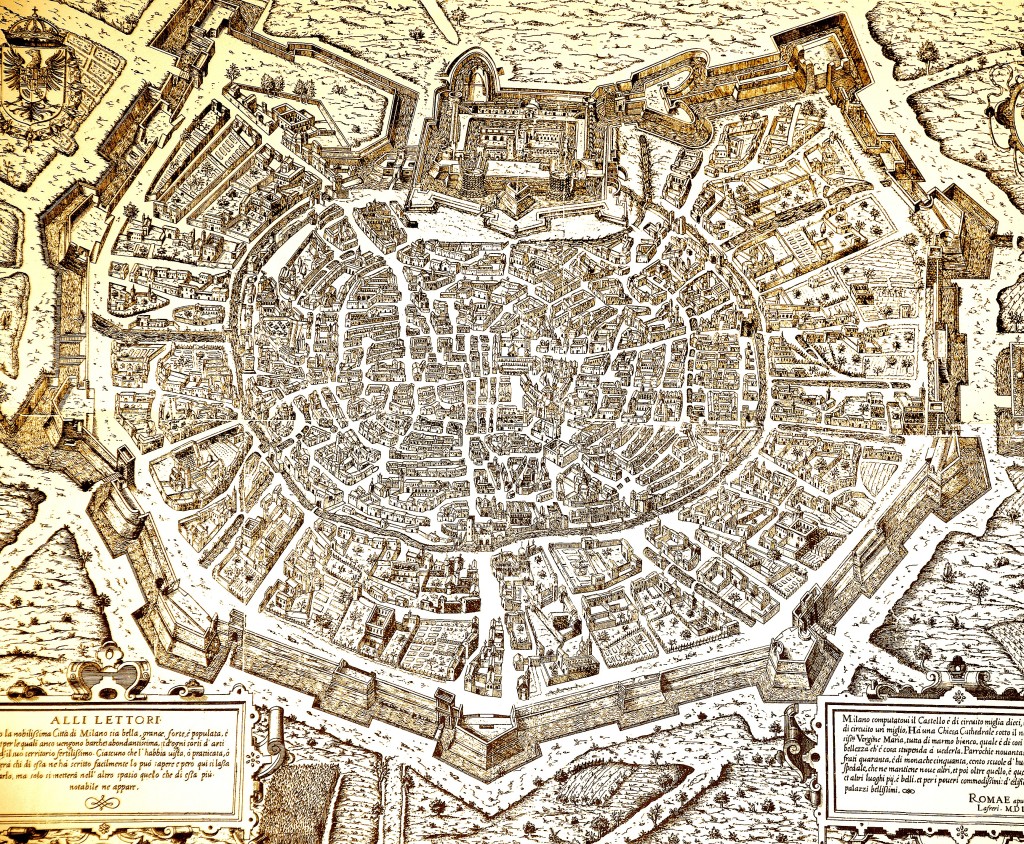
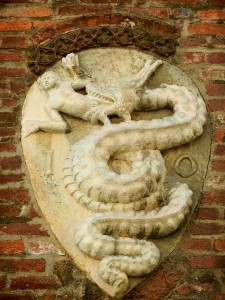
Since its time as the Roman settlement “Mediolanum”, Milan has always been a wealthy city and a key centre of Western Europe. Its ideal location along trading routes between Rome and the Western Empire assured Milan’s prosperity and value, allowing it to become the capital city of the Roman Empire by 286 AD. It was here that Emperor Constantine declared freedom of religions for Christians, after they’d been persecuted for centuries, transforming Milan into an important centre for the Christian religion. The capital began its decline following major sieges by the Goths, including one led by Attila in 452, and finally in 539 Milan was laid to waste. These barbarian hordes that tore the Roman Empire apart left little to be desired in Milan, which is why very few Roman buildings exist in the city today. This vital capital of ancient times was reborn in 1277 when the House of Visconti, whose emblem decorates much of Milan, took control. The Dukes of Visconti brought cultural and political renown once again to the city and began building the Cathedral and Castle, two incredible structures that are major monuments of Milan even today.
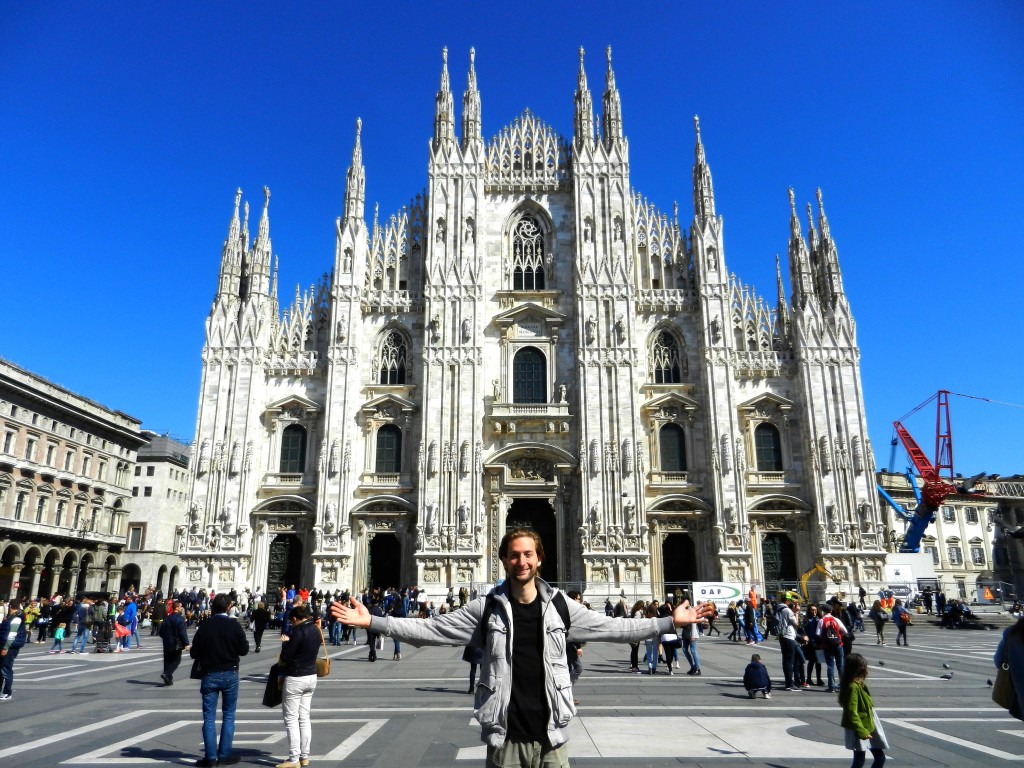
Not knowing much about Milan and having little idea of what to expect, we got off the metro at Duomo Station, the supposed ‘centre’ of the city. What we saw, after ascending the metro’s subterranean steps, took our breath away. The largest and most beautiful cathedral I have ever seen rose up in front of me like a pinnacle of marble spires, centred within the vast Piazza del Duomo. Despite being flanked by opulent palaces and stared down by a monument of King Victor Emmanuel II, the Duomo di Milano still dominates the scene. Since the time of the Visconti family, this stunning cathedral took nearly six centuries to construct, and you can see why. The Cathedral of Milan is the 5th largest church in the world, built in Gothic design, and covered with hundreds of carvings depicting various heroes, saints and kings. On the roof crouches 135 gargoyles of varying grotesqueness, and atop the highest spire stands the Lady Madonna in gilded bronze.
Once inside the cathedral, we were overwhelmed by the sheer size of its 40 pillars, rising up like tree trunks supporting a celestial canopy. Coloured light filtered through the church’s stained-glass windows, shining down on marble tiles of floral designs. Priests were commencing with holy mass up at the main altar and the smoke from their incense gave a sense of drama as is rose into the air.
Walking past the procession I gazed upon many sculptures and icons but the statue of the martyr Saint Bartholomew, flayed and wearing his skin like a cape, stood apart from the rest. Beyond poor Bartholomew we descended into the crypt of saints, as beautifully ornate as the cathedral, illuminated by glittering chandeliers. At the end of the hall was the body of Archbishop Carlo Borromeo contained within a glistening glass coffin. As the lines of tourists kept pouring in, flashing pictures and gazing into the saint’s transparent tomb, I wondered if Borromeo ever gets a moments rest.
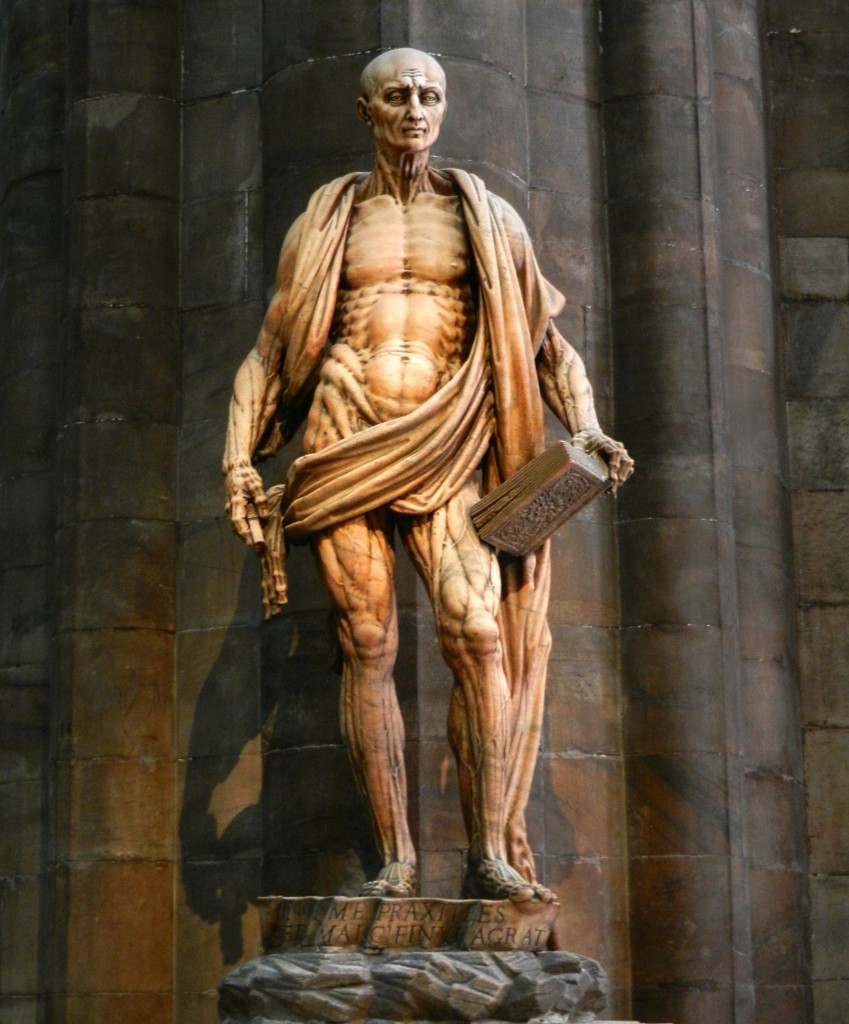
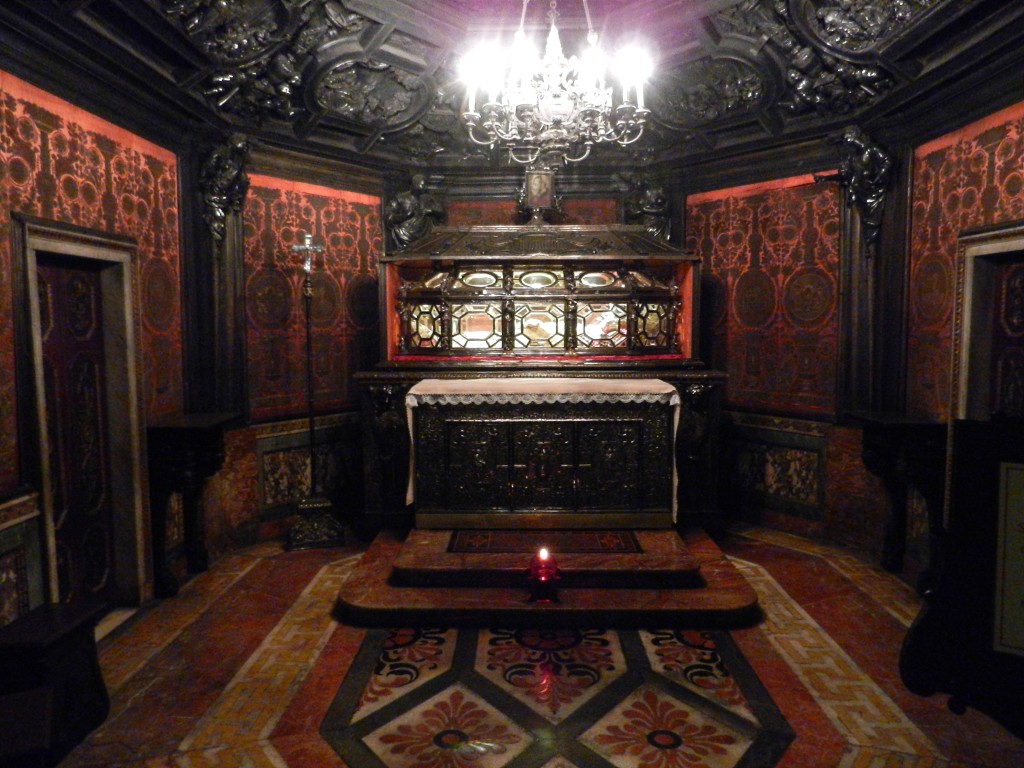
Stepping back outside into Cathedral Square, the triumphal arch of Vittorio Emanuele II’s Gallery caught our attention and we began our trek across the plaza. On our way to the arcade, we were cautious to avoid the countless immigrants aggressively trying to sell their selfie-sticks and cheap, twine bracelets. We found the best way to address these predatory sellers was to keep on walking and eventually, after following you for a block or two, they might leave you alone.
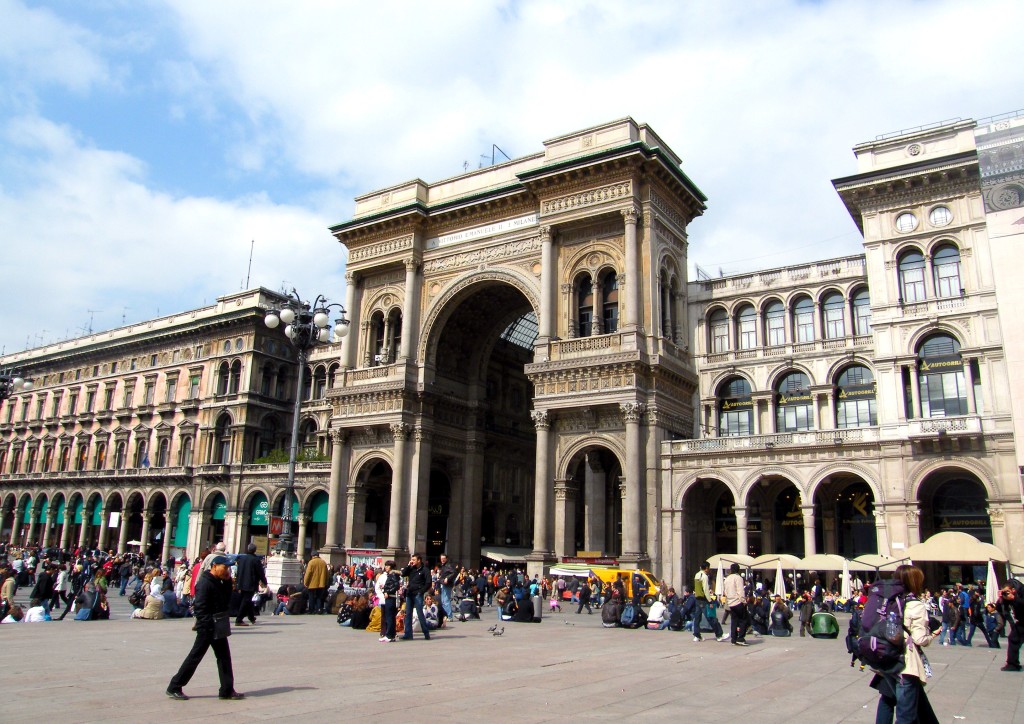
The extravagant Galleria Vittorio Emanuele II is one of the oldest shopping centres in the world (1861) and contains some of the most expensive brands in the world. Luxury, Italian retailers like Gucci, Prada, and Louis Vuitton flaunt their infamously pricey accessories, each with its own pedestal, from polished brass-framed windows. The arcade itself is extremely ornate with sculpture-adorned halls, mosaic floors, and a 47-metre high glass dome, all built in a Neo-Classical design. The Gallery’s cafes and restaurants make it a perfect meeting place, and it has been nicknamed Milan’s living room. We really enjoyed walking through this beautiful arcade, laughing at some of the ridiculous prices, but we eventually found ourselves coming out the other side into Piazza della Scala. We rested in the centre of Scala Square, under the severe gaze of Leonardo Da Vinci‘s statue, before continuing our tour.
Speaking of Leonard Da Vinci, the most famous religious painting of all time, The Last Supper, can be found inside Santa Maria delle Grazie church in Milan. It is said that in order for Leonardo to complete this mural he spent three years trying to find a person despicable enough to model for the face of Judas. I got over-excited at the prospect of gazing upon the original Da Vinci masterpiece, and we left ourselves a good chunk of time out of the day to see it. How naive I was, thinking that we could just waltz into The Last Supper‘s secured chamber without an appointment. Standing at the entrance of the beautiful Holy Mary of Grace church we were stared down by a grim-faced ticket agent, indifferent to our plight: “*Sigh*, no, you cannot see The Last Supper without an appointment.” “Well, I’d like to make an appointment.” “*SIGH*, no, you must call ahead to book your appointment.” “But we don’t have a phone!” “No skin off my nose, signore. NEXT!” We found out later that you can make your appointment online to see the mural, but to my great dismay, every day was booked. Learn from us fools and BOOK IN ADVANCE to visit The Last Supper, I’m sure it will blow your mind.

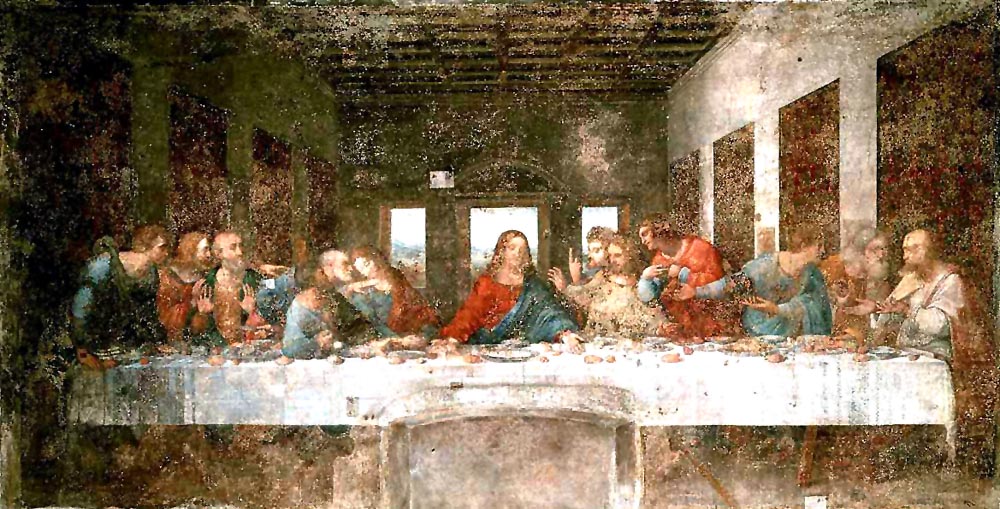
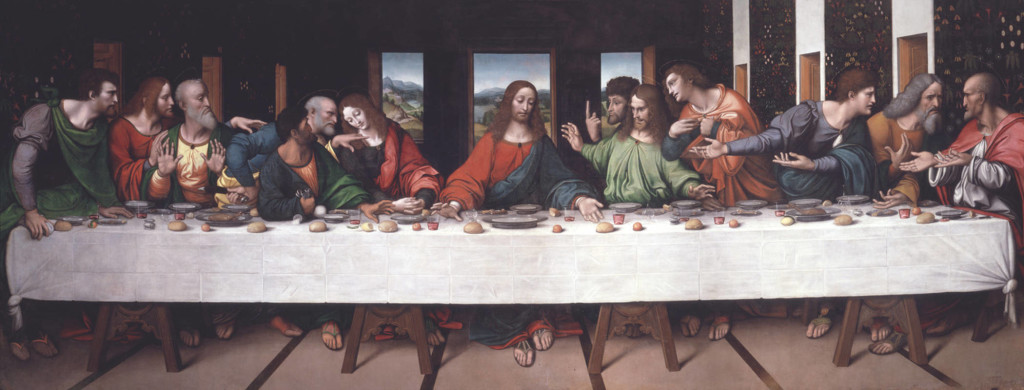
Walking to the end of Via Dante road you cannot miss the tremendous Castello Sforzesco, Milan’s second greatest landmark. The fortresses’ main gates are defended not by the Milan Royal Guard but by more African immigrants trying to push their shoddy products onto you. Several times I’d been approached by these shifty vendors who gave me a bright smile and a fist-bump (pound it, bro!) before tossing twine bracelets in my direction, expecting me to pay for them. I often used the old technique of don’t-stop-walking-shrug-off-worthless-crap, and eventually I was left alone to enjoy Sforza Castle in peace. Beyond visiting Sforza’s impressive fortifications you can enjoy hanging out in its green courtyards amidst Renaissance paintings, as well as exploring its art collections and archaeological museums.
Tired of the hustle and bustle of Milan’s powerhouse economy? You can escape into the serenity of Milan’s various public parks– scattered, green islands of tranquillity in a sea of commercial enterprise. The Indro Montanelli Gardens was a park we needed to withdraw to after days of dealing with rapacious hawkers and inattentive tourists. Since his recent death in 2001, the gardens are dedicated to Indro Montanelli, reputed to be Italy’s greatest journalist of the 20th century. After sauntering by the pond, snapping pictures of tortoises and feeding the ducks (DON’T FEED THE DUCKS!) you can do something a little more interesting and visit the park’s Natural History Museum or Planetarium.
We actually didn’t spend that much money in Milan; both Sforza Castle and the Milan Cathedral were free to enter and the rest of the time was spent wandering along the city streets, admiring the old town’s rich architecture and sampling gelato ice cream. I would highly recommend stopping in Milan on your tour of Italy; it’s such an important city with a regal history and the most fantastic cathedral you will ever see. Just remember, on your visit to Milan, whatever you do: don’t touch the Gucci purses!
